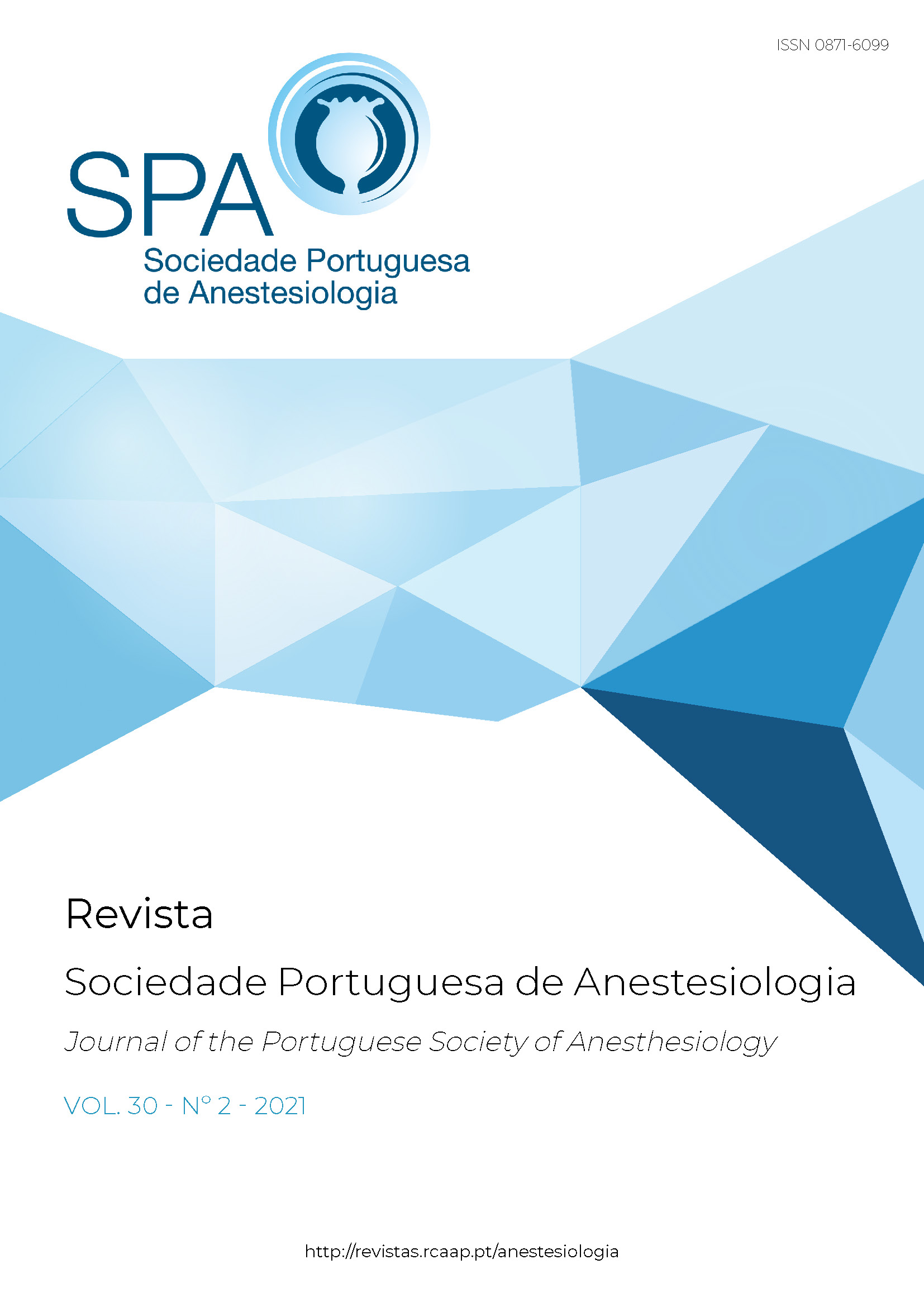Lymphoma in Pregnancy: Case Report, Multidisciplinary Management and Anesthetic Approach
DOI:
https://doi.org/10.25751/rspa.21536Keywords:
Lymphoma;, Quemotherapy, Anesthesia, Obstetrical, Multidisciplinary CommunicationAbstract
Lymphoma is the fourth most frequent cancer diagnosed during pregnancy, complicating about one in 6.000 pregnancies. The clinical approach must be based on a multidisciplinary medical team, involving collaboration from various medical specialties, in order to optimize maternal and fetal well-being. The anesthesiologist should gather of the patient’s clinical information, from the different medical specialties, in order to arrange the best anesthetic approach.
We describe a case of a 35-year-old pregnant woman diagnosed with a lymphoma of anterior mediastinum complicated with large volume pericardial effusion, superior vena cava syndrome and bronchial compression by the mediastinal mass and pulmonary congestion with hypoxemic respiratory insufficiency. She was proposed to elective cesarian section. The multidisciplinary management of this clinical situation was crucial. The anesthetic approach to this case was based on the best anesthetic technique considering the pregnant women’s clinical condition, chemotherapy’s possible side effects and the well-being of the fetus.
Downloads
References
2. Hodby K, Fields PA. Management of lymphoma in pregnancy. Obstet Med. 2009 Jun; 2(2): 46–51.
3. Berveiller P, Mir O. Taxanes during pregnancy: probably safe, but still to be optimized. Oncology 2012; 83:239–40.
4. Azim HAJ, Pavlidis N, Peccatori FA. Treatment of the pregnant mother with cancer: a systematic review on the use of cytotoxic, endocrine, targeted agents and immunotherapy during pregnancy. Part II: hematological tumors. Cancer Treat Rev. 2010; 36:110–21.
5. Kalter H, Warkany J. Congenital malformations: etiologic factors and their role in prevention (first of two parts). N Engl J Med. 1983; 308:424–31.
6. Vandenbroucke T, Verheecke M, Calsteren KV, Han S, Claes L, Amant F. Fetal outcome after prenatal exposure to chemotherapy and mechanisms of teratogenicity compared to alcohol and smoking. Expert Opin Drug Saf. 2014; 13: 1653–65.
7. Esposito S, Tenconi R, Preti V, Groppali E, Principi N. Chemotherapy against cancer during pregnancy: A systematic review on neonatal outcomes. Medicine. 2016; 95:38.
8. Kimberly K. Chemotherapeutic Drugs in Pregnancy. Obstet Gynecol Clin N Am. 2005; 32:627 – 640.
9. Huettemann E, Sakka S. Anaesthesia and anti-cancer chemotherapeutic drugs. Current Opinion in Anaesthesiology. 2005; 18:307–314
10. Gudaitytė J, Dvyvlys D, Šimeliūnaitė I. Anaesthetic challenges in cancer patients: current therapies and pain management. Acta Medica Lituanica. 2017; 24:121–127.
11. Rath L, Gullahorn G, Connolly N, Pratt T, Boswell G, Cornelissen C. Anterior mediastinal mass biopsy and resection: anesthetic techniques and perioperative concerns. Semin Cardiothorac Vasc Anesth. 2012; 16:235.
12. Hartigan PM, Ng JM, Gill R. Anesthesia in a Patient with a Large Mediastinal Mass. N Engl J Med. 2018; 379:587.
13. Gardner JC, Royster RL. Airway collapse with an anterior mediastinal mass despite spontaneous ventilation in an adult. Anesth Analg. 2011; 113:239.
14. Dubey PK, Tripathi N. Anesthetic Considerations in a Patient With Large Anterior Mediastinal Mass. J Cardiothorac Vasc Anesth. 2019; 33:1073.
Downloads
Published
How to Cite
Issue
Section
License
Copyright (c) 2021 Mariana Pinto, Joana Varandas, Maria João Freitas, Patrícia Ramos

This work is licensed under a Creative Commons Attribution-NonCommercial 4.0 International License.
Articles are freely available to be read, downloaded and shared from the time of publication.
The RSPA reserves the right to commercialize the article as an integral part of the journal (in the preparation of reprints, for example). The author should accompany the submission letter with a declaration of copyright transfer for commercial purposes.
Articles are published under the terms of the Creative Commons Attribution Non-Commercial License (CC BY-NC).
After publication in RSPA, authors are allowed to make their articles available in repositories of their home institutions, as long as they always mention where they were published.


